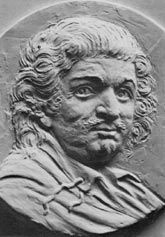Leonardo Botallo
Leonardo Botallo (also known as Leonardo Botal or Leonardi Botallo) was a prominent figure in the field of medicine during the Renaissance period. Born in the 16th century in Piedmont, Italy, Botallo is best remembered for his contributions to the understanding of the anatomy and function of the heart and blood vessels. His work laid foundational knowledge that would influence the field of cardiology and medical practice for centuries.
Biography[edit | edit source]
Little is known about the early life of Leonardo Botallo. He was born in the mid-1500s in Piedmont, a region in Italy known for its contributions to the Renaissance. Botallo pursued his education in the medical sciences, which was a burgeoning field of study at the time, thanks to the Renaissance's emphasis on learning and discovery.
Botallo's career was marked by his interest in the human body's circulatory system. He was a contemporary of other notable figures in medicine, such as Andreas Vesalius and William Harvey, though Harvey's discovery of the circulation of blood came after Botallo's time.
Contributions to Medicine[edit | edit source]
Leonardo Botallo is most famous for his discovery of the ductus arteriosus, a blood vessel in fetuses that connects the pulmonary artery to the aortic arch. This vessel allows blood to bypass the lungs, which are not in use until after birth. After birth, the ductus arteriosus typically closes within a few days; its failure to close is a condition known as patent ductus arteriosus (PDA), which can lead to various cardiac issues.
Botallo's work was documented in his publication, where he described the anatomy of the heart and the blood vessels with remarkable accuracy for his time. His observations contributed significantly to the understanding of the cardiovascular system and its functions.
Legacy[edit | edit source]
Leonardo Botallo's contributions to medicine, particularly in the field of cardiology, have been recognized for their importance in the history of medical science. The ductus arteriosus, often referred to as the "Botallo's duct," stands as a testament to his work and its lasting impact on the field.
Despite the advancements in medical science since Botallo's time, his discoveries remain a critical part of the foundational knowledge in anatomy and cardiology. His work exemplifies the Renaissance spirit of exploration and discovery, particularly in the study of the human body.
See Also[edit | edit source]
Navigation: Wellness - Encyclopedia - Health topics - Disease Index - Drugs - World Directory - Gray's Anatomy - Keto diet - Recipes
Search WikiMD
Ad.Tired of being Overweight? Try W8MD's physician weight loss program.
Semaglutide (Ozempic / Wegovy and Tirzepatide (Mounjaro / Zepbound) available.
Advertise on WikiMD
WikiMD is not a substitute for professional medical advice. See full disclaimer.
Credits:Most images are courtesy of Wikimedia commons, and templates Wikipedia, licensed under CC BY SA or similar.Contributors: Prab R. Tumpati, MD

